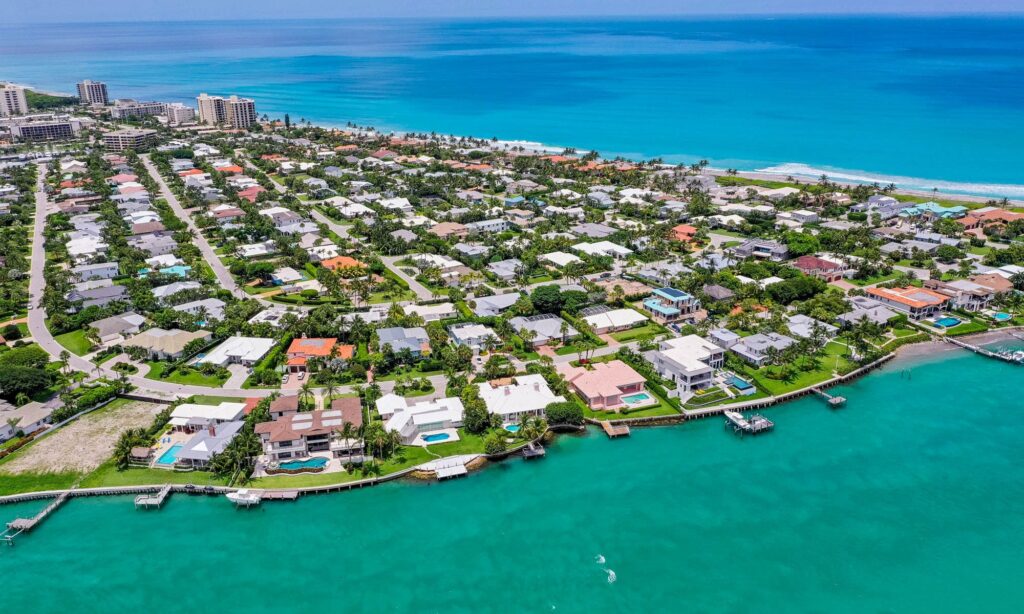How to Assess the Profitability of a Potential Rental Property
Understanding Rental Property Profitability: A Step-by-Step Guide
Investing in rental properties can be a highly lucrative venture, but it requires a thorough understanding of what makes a property profitable. Whether you’re a first-time investor or an experienced real estate professional, evaluating potential rental properties is essential to achieving long-term success. This comprehensive guide will walk you through the essential steps and factors to consider when assessing the profitability of a rental property. By the end of this guide, you will have the knowledge and tools needed to make informed investment decisions.
1. Determine Your Investment Goals
Before diving into the specifics of property evaluation, it is crucial to define your investment goals. Understanding your objectives will help you assess whether a particular property is suitable for your portfolio.
Short-Term vs. Long-Term Goals
Rental property investments can serve different purposes. Some investors may prioritize long-term capital appreciation, while others may focus on generating consistent monthly cash flow. Consider the following:
- Short-Term Goals: If you are looking to generate immediate income, you’ll likely prioritize properties that offer high rental yields.
- Long-Term Goals: For those interested in capital appreciation, you may opt for properties in areas with potential for significant growth, even if the current rental income isn’t substantial.
Defining your goals early on will guide you in choosing properties that align with your financial needs.
2. Understand the Different Types of Rental Properties
There are various types of rental properties available, and each has its own set of potential profitability factors. Familiarize yourself with the following types to determine which one aligns with your investment goals.
Single-Family Homes
Single-family homes are a popular choice for rental investors because they tend to have higher demand from tenants. The benefits include:
- Higher Rent Potential: Single-family homes typically allow for higher rental rates compared to multi-family units.
- Less Tenant Turnover: Tenants in single-family homes may stay longer, reducing the cost of tenant turnover.
However, they can come with a higher purchase price and may require more upfront investment.
Multi-Family Units
Multi-family properties, such as duplexes, triplexes, or apartment buildings, can be more profitable than single-family homes due to:
- Economies of Scale: Owning multiple units on a single property reduces operational costs, such as maintenance and management fees.
- Diversified Income: With more tenants, multi-family properties can provide more stable cash flow.
However, they may come with higher maintenance costs and tenant management challenges.
Vacation Rentals
Vacation rental properties, such as those listed on Airbnb or VRBO, can offer higher short-term rental rates. However, they can also be more volatile due to fluctuating seasonal demand. Consider the following factors:
- Location: Vacation rentals in prime tourist destinations tend to generate higher rental income.
- Maintenance: These properties often require more frequent upkeep due to the high turnover of guests.
Commercial Properties
Commercial rental properties, such as office buildings or retail spaces, typically offer higher returns but also come with greater risk. These properties require substantial investment and are subject to market conditions that can impact rental rates.
3. Calculate the Potential Rental Income
Once you have a clear understanding of the property type and your investment goals, it’s time to calculate the potential rental income. Rental income is the revenue generated from renting out a property to tenants. To assess rental income, you need to research comparable rental rates in the area and consider factors that can influence rent prices.
Research Comparable Properties
To estimate potential rental income, research the rental rates for similar properties in the area. Tools like Zillow, Realtor.com, and local property listings can help you get a sense of the market rate. Be sure to compare properties with similar size, location, and amenities to get an accurate idea of what your property could rent for.
Consider Local Market Trends
Local market conditions play a significant role in determining the rental income of a property. Areas with high demand for rental properties, such as those near universities, business districts, or popular attractions, tend to generate higher rental income. Keep an eye on market trends, such as:
- Rental Demand: If there is a shortage of rental properties in the area, you may be able to charge higher rent.
- Economic Growth: Growing economies with low unemployment rates tend to attract more renters, driving up rental income potential.
Rent Adjustments
Keep in mind that rental rates may change over time due to inflation, renovations, or changing market conditions. Ensure that you account for potential rent increases in your long-term profitability calculations.
4. Assess the Property’s Operating Expenses
Operating expenses are the costs associated with managing and maintaining the rental property. Understanding these costs is essential for assessing whether a property will generate sufficient income to make it profitable.
Property Taxes
Property taxes can significantly impact the profitability of your rental property. Be sure to check the property’s current tax rate and historical trends in property tax assessments. High property taxes can eat into your profits, so it’s crucial to factor these costs into your calculations.
Insurance
Insurance costs vary depending on the type and location of the property. Typical insurance coverage includes:
- Landlord Insurance: Covers property damage and liability in case of accidents.
- Flood Insurance: If the property is in a flood zone, you may need additional flood insurance.
Be sure to get quotes from insurance providers to determine how much you will need to budget for insurance.
Maintenance and Repairs
Maintenance costs are inevitable when owning a rental property. These include:
- Routine Maintenance: Regular upkeep such as lawn care, HVAC servicing, and pest control.
- Emergency Repairs: Unexpected costs like plumbing issues, electrical problems, or appliance breakdowns.
A general rule of thumb is to allocate 1% to 2% of the property’s value for annual maintenance costs. However, this may vary depending on the age and condition of the property.
Property Management Fees
If you decide to hire a property management company, their fees will impact your overall profitability. These fees typically range from 8% to 12% of monthly rental income. Property managers handle everything from tenant sourcing and rent collection to maintenance and repairs.
If you plan to self-manage the property, you can save on these costs but will need to invest time and effort into handling these tasks yourself.
5. Analyze Financing Options
Most real estate investors will require financing to purchase a rental property. Your financing options and interest rates will have a significant impact on the property’s profitability.
Mortgage Payments
Mortgage payments are one of the largest expenses associated with owning rental property. Be sure to calculate monthly mortgage payments based on the loan amount, interest rate, and term of the loan. A lower interest rate or shorter loan term will help you pay off the property faster, potentially improving your profitability.
Down Payment
The amount of the down payment can also affect the property’s profitability. Larger down payments reduce the mortgage amount, leading to lower monthly payments and potentially higher cash flow. However, a larger down payment also means less liquidity and capital available for other investments.
6. Calculate the Cash Flow
Cash flow is the net income generated by the rental property after all expenses (mortgage, insurance, maintenance, etc.) are deducted from the rental income. To calculate cash flow, subtract your total expenses from your rental income.
Positive Cash Flow
A property with positive cash flow generates more income than expenses, which is the ideal scenario. This means the property is earning you money every month.
Negative Cash Flow
A property with negative cash flow occurs when the expenses exceed the rental income. This situation can be problematic, especially if it persists over time. However, some investors may accept negative cash flow if they believe the property will appreciate in value, providing long-term capital gains.
7. Calculate the Return on Investment (ROI)
To measure the profitability of a potential rental property, calculating the ROI is essential. ROI is a percentage that represents the return you earn relative to the amount of money you invested.
ROI Formula:
ROI = (Net Income / Total Investment) × 100
Where:
- Net Income is the annual rental income minus operating expenses.
- Total Investment includes the purchase price, closing costs, and any renovation expenses.
By calculating ROI, you can determine whether the potential return justifies the initial investment.

Get a Free Rental Analysis
Want to know how much your home will rent for? We’ll send you a free rental report!
8. Assess the Property’s Appreciation Potential
While cash flow is important, long-term capital appreciation can be a key factor in determining the overall profitability of a rental property. Appreciation refers to the increase in the property’s value over time. Understanding how to evaluate a property’s potential for appreciation can help you make a more informed investment decision.
Historical Property Value Trends
Reviewing the historical property value trends in the area can provide valuable insights into how the property may appreciate. Analyze the following:
- Price Growth Over Time: Look for neighborhoods where property values have steadily increased over the years.
- Local Market Conditions: Economic growth, infrastructure development, and population growth in the area can lead to higher property values.
- Comparison with Similar Properties: If comparable properties in the area have appreciated significantly, your investment may have a similar growth trajectory.
Future Development Plans
Properties located in areas with planned or ongoing development projects may see substantial appreciation in the future. Pay attention to:
- Infrastructure Projects: New roads, highways, schools, and public transportation systems can increase demand for properties in the area.
- Commercial Development: The opening of new businesses or commercial centers can attract tenants and boost property values.
- Zoning Changes: Local governments may change zoning laws that could increase the desirability of the area for residential or commercial use.
Researching future development plans through local government websites, planning commissions, and news outlets can give you a competitive advantage in identifying high-appreciation areas.
9. Conduct a Comparative Market Analysis (CMA)
A Comparative Market Analysis (CMA) is an essential tool for assessing the potential profitability of a rental property. It involves comparing the property in question with similar properties in the area to determine its fair market value, rental income potential, and expected appreciation. Here’s how to conduct a CMA:
Identify Comparable Properties (Comps)
Find properties similar to the one you’re considering in terms of size, condition, and location. Pay attention to:
- Sold Properties: Look at recently sold properties in the area to understand market value trends.
- Rental Listings: Review rental listings for comparable properties to gauge the potential rental income.
- Property Features: Ensure the properties you’re comparing have similar features (e.g., number of bedrooms, bathrooms, square footage, etc.).
Analyze Market Conditions
The rental market can vary significantly based on location, economic conditions, and other factors. Consider the following while conducting a CMA:
- Market Saturation: An oversupply of rental properties in the area may limit your rental income potential.
- Tenant Demand: High tenant demand in the area typically correlates with higher rental income and lower vacancy rates.
- Rental Yield: Compare the rental yields of similar properties to determine whether your potential rental income aligns with the local market.
By evaluating these factors, you can better assess whether the property you’re considering is priced appropriately and whether it will be a profitable investment.
10. Understand the Risks Involved
While assessing the profitability of a rental property is crucial, it’s equally important to understand the risks involved. Like any investment, rental properties come with inherent risks that can affect your returns. Being aware of these risks will help you make more informed decisions and take steps to mitigate them.
Vacancy Risks
Vacancy risk occurs when your property remains unoccupied for a period of time, resulting in a loss of rental income. To minimize vacancy risk, consider the following:
- Tenant Screening: Conduct thorough tenant screening to ensure that you’re renting to responsible tenants who are more likely to stay long-term.
- Lease Terms: Offer lease terms that provide stability and help avoid frequent turnover. Longer leases can provide more predictable cash flow.
- Location and Demand: Choose properties in areas with high demand for rentals to reduce the likelihood of vacancies.
Market Risk
Market risk refers to fluctuations in the real estate market that can affect your property’s value and rental income. This can be impacted by:
- Economic Conditions: A downturn in the economy can lead to reduced demand for rental properties and a decline in property values.
- Interest Rates: Rising interest rates can increase mortgage payments and reduce your profit margins.
- Local Market Factors: Changes in local zoning laws, development projects, or even neighborhood crime rates can affect the desirability of your property.
To manage market risk, keep a close eye on local and national economic trends and stay informed about any changes that may impact the market in your area.
Property Damage and Maintenance Costs
Another risk to consider is the potential for property damage and the associated costs of repairs. This can be especially problematic if the property is older or in an area prone to natural disasters. To mitigate this risk:
- Adequate Insurance: Make sure the property is adequately insured to cover potential damage caused by disasters, accidents, or other unforeseen events.
- Regular Maintenance: Conduct regular maintenance to identify and address small issues before they become larger, more costly problems.
- Emergency Fund: Set aside a reserve fund to cover unexpected repairs or property damage.
By anticipating potential risks and planning accordingly, you can reduce the likelihood of experiencing unexpected setbacks.
11. Leverage Technology and Tools
In today’s digital age, technology plays a key role in helping investors assess the profitability of potential rental properties. Numerous tools and platforms are available that can streamline the property evaluation process, providing you with valuable data and insights to make informed decisions.
Property Valuation Tools
There are several online platforms that can help you assess the value of a rental property and estimate potential rental income. Websites like Zillow, Redfin, and Rentometer offer property valuation tools that provide comparable property prices, rental rates, and market trends.
Cash Flow Calculators
Cash flow calculators are tools that allow you to input all of your property’s financial information (purchase price, mortgage, insurance, taxes, etc.) to estimate your monthly and annual cash flow. These calculators can help you quickly determine whether a property is likely to generate positive cash flow.
Property Management Software
Property management software can help you track expenses, rent payments, and maintenance schedules. These tools can also automate many tasks, making property management more efficient and less time-consuming. Popular property management software options include Buildium, AppFolio, and Rentec Direct.
Market Research Platforms
Real estate platforms like CoStar, LoopNet, and REIS provide detailed data and analysis on local real estate markets, including commercial and residential trends, vacancy rates, and rental income potential. Using these platforms can give you a more comprehensive understanding of market conditions in the area you are considering.
12. Calculate the Capitalization Rate (Cap Rate)
The capitalization rate (Cap Rate) is a key metric used by real estate investors to evaluate the profitability of a potential rental property. It provides a quick snapshot of the return on investment, independent of financing, and can help you compare properties in different markets. The Cap Rate is expressed as a percentage and calculated using the following formula:
Cap Rate Formula:
Cap Rate = (Net Operating Income / Property Value) × 100
Where:
- Net Operating Income (NOI) is the annual rental income minus operating expenses (excluding mortgage payments).
- Property Value is the current market value or purchase price of the property.
The Cap Rate can help you determine the relative profitability of different properties and assess whether the investment is worth pursuing. A higher Cap Rate generally indicates a higher return on investment, but it may also signal higher risk.

13. Assess the Local Rental Market
Understanding the local rental market is critical in determining the potential success of your rental property investment. Rental markets can vary significantly between neighborhoods, cities, and even within different property types. Here’s how to assess the rental market:
Rental Demand
One of the most important factors in evaluating the rental market is demand. High demand typically leads to higher rents and lower vacancy rates, while low demand can result in prolonged vacancies and reduced rental prices. To assess rental demand, consider the following:
- Population Growth: Areas with increasing populations often see higher demand for rental properties.
- Employment Opportunities: Cities or regions with strong job markets tend to have higher rental demand. Research local employers and job growth trends.
- Tenant Demographics: Understand the tenant base in the area. Young professionals, families, retirees, or college students all have different needs and preferences in housing.
- Rental Yield: Assess the average rental yield in the area. A rental yield below the average market rate may indicate low demand or high competition.
Vacancy Rates
Vacancy rates are a good indicator of the rental market’s overall health. A high vacancy rate can be a sign of oversupply, poor property management, or low tenant demand. On the other hand, a low vacancy rate suggests a competitive market where rental properties are in demand. You can obtain vacancy rates from local property managers, real estate agents, or government statistics.
Rent Trends
Rent trends in the area are another important consideration when assessing a rental property. Look for areas where rent prices have been consistently increasing, as this may indicate a healthy and growing market. Use platforms like Zillow or Rentometer to track historical rent data for similar properties in the neighborhood.
14. Evaluate the Property’s Condition and Age
The condition and age of the property play a major role in determining its long-term profitability. Older properties may require more frequent maintenance and repairs, leading to higher operating costs. However, newer properties may come with a higher purchase price or construction costs.
Inspection and Maintenance Costs
Before committing to a rental property, it is crucial to have a thorough inspection to identify any structural or maintenance issues. Older properties, especially those that haven’t been properly maintained, can have hidden problems that may require costly repairs.
- Foundation, Roof, and Plumbing: These are high-cost areas to repair. If these systems are outdated or in poor condition, it can drastically impact profitability.
- Appliances and Fixtures: Consider the state of the appliances, HVAC systems, and fixtures. If they are old or inefficient, they may require frequent repairs or replacements, which can eat into your profits.
While older properties may have charm and unique features, it’s essential to weigh the maintenance costs against the potential rental income and property value.
Property Age and Depreciation
The age of the property affects both its depreciation and maintenance requirements. Real estate depreciates over time, meaning the property’s value decreases, which can be offset by tax deductions in some cases. However, older properties can experience more rapid depreciation, especially if major repairs are needed.
Consider the age of the property and factor in depreciation when estimating future returns. Consult with a real estate tax professional to determine how depreciation can impact your bottom line.
15. Factor in Financing and Interest Rates
The terms of your financing can have a significant impact on the overall profitability of your rental property. Mortgage interest rates, loan terms, and down payments all affect your cash flow and return on investment. Here’s how to assess financing:
Interest Rates and Loan Terms
Interest rates are a key factor in determining your mortgage payment and the cost of borrowing. When interest rates are low, your monthly payments will be lower, which positively affects your cash flow. Conversely, high interest rates can make it more expensive to finance the property, reducing your profitability.
Consider whether you should go for a fixed-rate or adjustable-rate mortgage. A fixed-rate mortgage provides stability with consistent monthly payments, while an adjustable-rate mortgage may offer a lower initial interest rate but can change over time.
Loan-to-Value (LTV) Ratio
The Loan-to-Value (LTV) ratio is the amount of the loan compared to the appraised value of the property. A higher LTV means you’ll be borrowing more relative to the property value, which increases your risk. It may also result in higher mortgage insurance costs, reducing your profitability. A lower LTV means you’ll need to put down more money upfront, but it can lead to lower interest rates and more favorable loan terms.
Financing Costs and Fees
Besides the interest rate, also consider other financing costs such as closing costs, loan origination fees, and property appraisal fees. These one-time expenses can add up quickly and should be factored into your initial investment calculations.
16. Understand the Legal and Tax Implications
Rental properties come with a variety of legal and tax considerations that can impact profitability. It’s important to understand these implications before making a property purchase.
Property Taxes
Property taxes vary by location and can significantly affect your annual operating expenses. Be sure to research the local property tax rates before purchasing a rental property. Local tax assessors or real estate agents can provide this information.
Property tax rates in some areas may be higher than others, reducing the overall return on investment. In addition, property taxes can increase over time, so it’s important to stay updated on any changes in tax rates.
Rental Property Laws
Each jurisdiction has its own set of laws and regulations governing rental properties. These laws may include rent control, eviction processes, tenant rights, and maintenance obligations. Familiarizing yourself with these laws is essential to avoid legal issues and potential fines.
Rental property owners are also subject to zoning regulations, which can impact how the property can be used (e.g., single-family vs. multi-family). You should also be aware of any building codes or ordinances that could affect the property’s condition or rental potential.
Depreciation and Tax Deductions
Rental property owners can benefit from tax deductions on certain expenses, such as mortgage interest, property taxes, repairs, and maintenance costs. Depreciation allows you to deduct a portion of the property’s value over time, which can offset rental income and reduce your taxable income.
It’s important to work with a tax professional who specializes in real estate to understand how these deductions and tax benefits can improve your overall profitability.
17. Monitor Ongoing Costs and Expenses
Once the property is up and running, it’s crucial to continue tracking your expenses to ensure the property remains profitable. Ongoing costs may include property management fees, utilities, repairs, and marketing expenses for finding tenants. Regularly monitoring your expenses will help you adjust your strategy and ensure that your property is performing well financially.
Regular Expense Review
Create a system to track and categorize expenses such as maintenance, utilities, insurance, and management fees. Periodically review your expenses to identify areas where you can cut costs without compromising the property’s quality or tenant satisfaction.
Contingency Budget
Maintain a contingency budget for unexpected expenses, such as major repairs, vacancies, or emergency situations. A good rule of thumb is to set aside around 10-20% of your rental income for these contingencies.
By continuously evaluating and adjusting your rental property’s expenses, you can maximize your investment’s profitability.
Suggested Relevant Links:
The Impact of Proactive Property Management on Profitability
Investment Property Cashflow Calculator
Maximizing ROI: The Financial Impact of Professional Tenant Screening
Rent Collection Services Palm Beach
Lease Renewals Made Easy: How Property Managers Increase Retention Rates
Frequently Asked Questions (FAQ) – How to Assess the Profitability of a Potential Rental Property
1. What is the most important factor in assessing a rental property’s profitability?
The most important factors include rental income, operating expenses, financing costs, and the condition of the property. Evaluating these elements helps determine whether the property will generate enough cash flow and long-term gains.
2. How do I calculate rental income for a property?
To calculate rental income, simply multiply the monthly rent by the number of rental units. For example, if the rent is $2,000 per month and there are two units, the rental income is $4,000 per month.
3. What is the cap rate, and how is it used?
The cap rate is the ratio of a property’s annual net operating income to its market value. It’s used to evaluate the profitability of a property. A higher cap rate generally indicates a more profitable investment.
4. How can I determine if a property has a high potential for appreciation?
Research the local real estate market, looking for factors such as neighborhood development, infrastructure projects, and population growth. High-demand areas with strong job markets and amenities often experience higher appreciation.
5. What should I consider about property management when assessing profitability?
Property management fees, whether you manage the property yourself or hire a company, can significantly impact your profitability. Fees typically range from 8-12% of the monthly rent, and effective property management is key to maintaining high occupancy rates and low maintenance costs.
6. Are there any hidden costs I should be aware of when buying a rental property?
Yes, hidden costs may include property taxes, insurance, repairs, vacancy rates, and property management fees. It’s important to factor in these expenses when calculating potential profit.
7. What impact do interest rates have on my rental property investment?
Higher interest rates increase mortgage payments, reducing cash flow and profitability. Lower interest rates can make the property more affordable and boost profitability, as lower payments mean higher cash flow.
8. How do I assess the rental demand in a specific area?
Research local population growth, job market strength, and vacancy rates. Websites like Rentometer or local rental listings can help you understand rent prices and demand in the area.
9. What is the importance of property depreciation in rental property profitability?
Depreciation allows property owners to deduct the cost of the property over time, lowering taxable income and improving cash flow. However, the property may lose value over time, so it’s essential to balance depreciation with market trends.
10. Should I buy an old property or a new one for rental investment?
Newer properties typically require less maintenance, but may come with a higher purchase price. Older properties may have charm but could need more repairs. It depends on your budget, risk tolerance, and long-term goals.
11. How can I estimate my return on investment (ROI) for a rental property?
Calculate ROI by subtracting your total costs (purchase price, financing, repairs, etc.) from your annual rental income. Divide the result by your total costs to find the ROI percentage.
12. What are the risks of investing in rental property?
Risks include vacancies, unexpected repair costs, market downturns, and changes in local laws. Proper research and contingency planning can help mitigate these risks.



